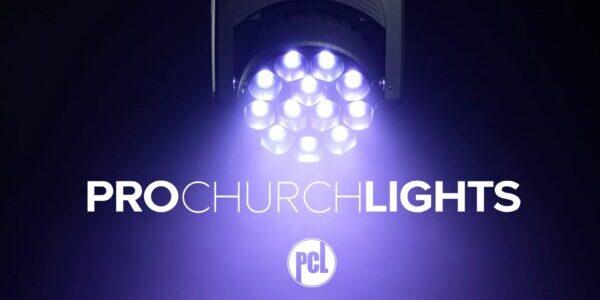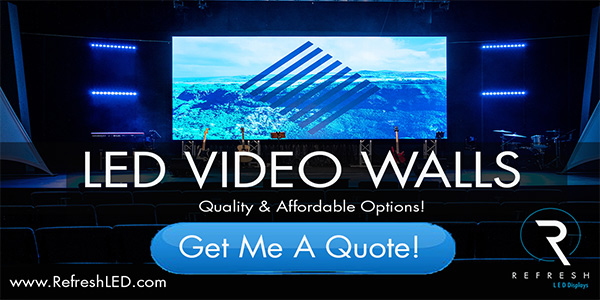This post sponsored by StageLightCompany.com—professional lighting for churches.
In this article, Duke DeJong shares about four different lighting techniques, as well as creating zones to evenly light your stage.
We’ve talked a little about lighting options. But what exactly do we do with all of these lights? Let’s look at some traditional methodologies of lighting which include everything from one to four fixtures per lighting zone.
One-Point Lighting
Most of us experience one-point lighting in nature every day. Yes, I’m talking about sunshine. In many occasions, a single source of light creates a very natural, sometimes dramatic look that will draw people’s attention to the single lighted person or surface. And if it’s good enough for nature, there are times it might be good enough for you. The catch? As anyone can see with a walk around the park, a single source looks two dimensional or flat, and rarely hits people straight on, so it creates shadows.
Two-Point Lighting
When you want the subtleness of a single light source but want your people to stand out in 3D, two-point lighting can be a great way to add dimensionality without going overboard on your lighting. I often use this approach for bands in churches that like a more aggressive lighting vibe by taking a single light source from straight on in front of the lighting zone, about 30-40 degrees up. I then add a top light above and slightly behind the zone (about 60-70 degrees) in order to define the head and shoulders of the people in the zone, creating a three-dimensional look without using too much light. There is still quite a potential for shadowing if a person turns their head either direction, but where a little shadowing is okay, this can be an effective way to bring focus.
Three-Point Lighting
Not everyone is happy with the shadows that two-point lighting can produce, so the logical solution would be to add two light fixtures from the front, still 30-40 degrees up but having each fixture hitting your zone from 45 degree angles off center. Add that same top light from above and slightly behind, and you’ve got three fixtures giving you light on both sides of the face (regardless of the direction it faces) and a multi-dimensional look. This approach is commonly used in theater and worship stages where cameras aren’t used, or at least aren’t a big focus.
Four-Point Lighting
When cameras are being used, especially HD cameras, three-point lighting can actually fall short of providing even lighting across your lighting zones. Think of a 10-foot wide circle as your lighting zone. As you move to the right, the right side of your face will become brighter as you get closer to the right fixture and farther from the left fixture. Turn around and head back the other way and the opposite happens. Cameras tend to pick up on this more than our eyes, because our brains compensate where a camera does not. In order to fix this, in places where cameras play a critical role, I tend to use four-point lighting. That means a front light straight-on the lighting zone, providing the primary light, and two fill lights 45-60 degrees off center to fill in the sides of the face. The straight-on light is my primary source, so for example I may have that intensity at 80%. If that’s true, my fill lights might be at 60% and then of course I have my top light providing the dimensionality I want from behind. All three of the front lights would still shoot at a 30-40 degree angle and my top light would be above and behind at 60-70 degrees.
Creating Zones
Lighting is most effective when you have good control of what your light is hitting and not hitting, and the best way to make a plan of attack for your stage is to divide it into zones. Most lighting pros will divide their stages into zones of 8-12 foot diameter circles with a slight overlap of zones to make sure there are no holes in the coverage. If your stage is 30 feet wide and 30 feet deep, you would likely end up with 3 zones across down-stage, 3 zones across mid-stage, and 3 zones across up-stage. Breaking your stage into these zones not only helps make lighting them evenly more manageable but also allows for greater control of special lighting. For example, perhaps you want to draw attention to a speaker down-stage left for one part of your service and then immediately cut to down-stage right for the next part. By lighting each zone individually at the right times, you draw everyone’s attention to the right place at the right time.
What’s Right For You?
This may take some experimentation, but if you’re starting out with no lights (and no video cameras), I’d say start off with two or three point lighting for every zone on your stage. Work the angles the best you can. If you have to fudge three point lighting at 40 degrees off center instead of 45 degrees or have your single front light in two point lighting be slightly off center, it’s not the end of the world as long as it looks good to you and puts focus where it needs to be. In fact if you only have two fixtures per zone and choose to have a flatter look but less shadows, you can use two fixtures from 45 degrees off center from the front, creating a more even front look.
If cameras are a big part of what you do, I typically look at two or three-point lighting for the zones the band will be in and then four-point lighting for the down-stage areas my speaker will use. The beauty is with four-point lighting on the down-stage sections, I can choose to only turn on three of them to match the rest of the stage for worship and then add the fourth light once my speaker comes on stage. The same holds true with a two-point approach. But when it comes time for the message, the lighting looks even from side to side with no shadows when the head turns and a 3D look because of our top light.
The long and the short of lighting is that while there are tried and true theatrical methodologies, lighting is all about focusing attention and creating atmosphere. Whatever accomplishes those tasks for you is “right”, regardless of how exactly you get there. Some churches will want very minimal white light but will have layers and layers of color. Some will choose to do 4 or more white lights per zone. The goal should always be creating a look that enhances what you’re doing and brings focus where focus is needed.
Duke is passionate about equipping the next generation of ministry leaders, especially those serving churches with technology. He serves as Church Relations Director for CCI Solutions, a design build technology solutions provider. Follow Duke on Twitter: @dukedejong











Leave a Reply